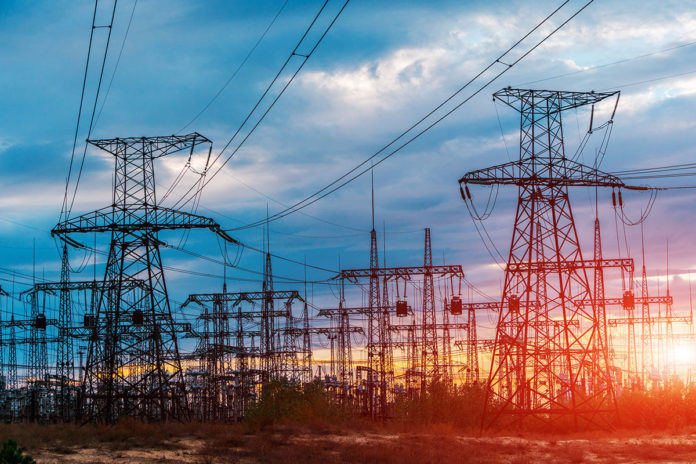As a Labor Day Weekend heat wave descends on Southern California, we will undoubtedly see a strain on the electrical grid as residents seek air-conditioned relief from the heat. For those with solar, the overall electric bill might be less but the demand will likely exceed the amount your system can produce and require you to pull from the grid as well. The point is, that the electrical grid will be strained to supply all 38 million California residents with the electricity they need let alone the 24 million who live in Southern California and are most likely to experience this type heat related energy demand in the future.
Much like your household budget, the state of California has two choices when it comes to meeting the energy needs of its residents, make more or use less. We have seen campaigns to conserve energy, turn off lights when you are not in a room, raise the temperature of your thermostat when you are not home, or even unplug unused appliances. Economic incentives with programs like OhmConnect.com which rewards you for using less during peak energy periods or just simply making electricity more expensive based on usage tiers or time of use can encourage consumers to use less. However, raising the cost of electricity to reduce usage seems like a win/win for the utility since their profit margin dramatically increases the more you use and has made the cost of electricity in California as much as 47% higher than the rest of the nation.1
Long term, however, using less is not likely to be a successful strategy since the state of California has just voted to make new cars sold by 2035 electric vehicles (EV) only. This leaves a couple of big questions unanswered. How much electricity will this require and where will it come from?
Let’s figure it out.
According to the California New Car Dealers Association, California sells about 2 million new cars a year. To err on the side of safety and not run the risk of sensationalizing the situation, let us assume that over the next 13 years there is no increase in the number of new cars sold, and by 2035 we are still only selling 2 million new vehicles per year. Also, as a part of this calculation, let us consider the number of EVs sold between now and then.
Currently, California Averages about 240,000 EV sales per year, and that will likely increase through 2035. In fact, EV sales would need to increase by more than 700% over the next 13 years to meet the goal or an average compounding rate of a little more than 16% per year. That means we will add about 12 million EVs between now and 2035 and then potentially 2 million EVs per year after that.
So how much electricity will all those Electric Vehicles use? Well, according to ecocostsavings.com the average EV uses 34.6 kWh per 100 miles or .346kWh per mile. According to the federal highway administration, Californians collectively drive about 340 billion miles per year, or an average of about 12,500 miles per driver.2
So, if we are going to add 12 million vehicles over the next 13 years, we could expect an increase in electricity demand of 51.9 billion kWh and an additional 8.65 billion kWh per year after that. And for those that want me to show my work (12 million cars x 12,500 miles = 150 billion miles per year, multiply that by .346 kWh to get 51.9 billion kWh, and 2 million x 12,500 miles equals 25 billion miles multiplied by .346 kWh equals 8.65 billion)
According to the California Energy Commission, California produced 194 TWh of electricity in 2021 (a terawatt or TWh is equal to 1 billion kilowatts or kWh) and imported 83 TWh of electricity to meet our total consumption need of 277.764 TWh of Electricity. Based on the math we just covered, California will need to increase the amount of electricity available to its residents by 51.9 TWh which is roughly 62% of the amount we currently import from other states, and close to 27% of the amount that we currently produce in California.
That covers our first question of how much electricity we will need. But where is this electricity going to come from? Again, according to the California Energy Commission, 50% of the electricity we produce here in California actually comes from natural gas power plants scattered throughout the state. A majority of which are located in Southern California and mostly in LA County, so if the majority of new electric vehicles sales will likely happen in Southern California where the majority of the population exists, it would stand to reason that natural gas would be the likely source to cover that increased demand. So, this kind of brings up a third question, how exactly is the switch to EVs going to lessen our usage of fossil fuels?
As I mentioned at the beginning of this article, California has two choices, use less or make more. If the option to make more electricity is wholly dependent on using more natural gas and the point of switching to EVs was to reduce fossil fuel usage then we may be stuck with only one option. Use less.
Based on the state’s track record of economically desensitizing us from using electricity through sky-high rates, then enjoy the air conditioning during this heatwave, because it may become a luxury that only a few can afford.
Dave Baldwin is a CERTIFIED FINANCIAL PLANNER and author of “The Balancing Act.” He runs a financial planning and wealth management practice in Vista, CA.
1. Average cost of electricity in California vs nation
https://www.bls.gov/regions/west/news-release/averageenergyprices_losangeles.htm
2. Miles driven in California
https://www.thezebra.com/resources/driving/average-miles-driven-per-year/#average-miles-driven-per-year-by-state
3. electricity produced in California
https://www.energy.ca.gov/data-reports/energy-almanac/california-electricity-data/2021-total-system-electric-generation




